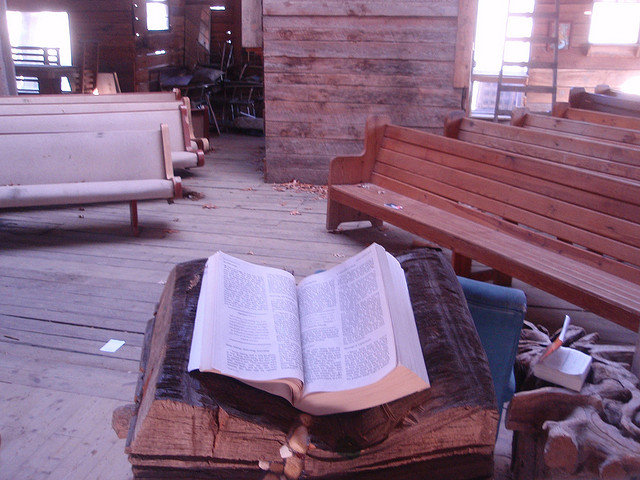
One Way to Challenge Yourself in Bible Study
Last night, I began teaching a class on the book of Philippians. What a treasure that little book is! In our world, so filled with negativity, this book stands out as starkly as anything I can imagine.
As I began teaching, though, I shared something with the class that I thought might challenge each of us as we seek to study the Bible. You see, I took a class on Philippians in my time in graduate school at Freed-Hardeman. Dr. Earl Edwards taught the class and the notebook he used to teach from is filled with scores of pages of good, helpful, well-researched material. In fact, several years ago, I used it to preach through the book at 9th Avenue.
However, what I told my class last night is this: my challenge in teaching this class is to avoid removing that notebook from my shelf a single time. That’s right: I’m not going to use that resource once in teaching this book.

Now, of course, I am using other sources. As I type this post, in fact, there are four commentaries and one “background” book laying around that I used to get ready for my first class, as well as a couple of other sources. My Bible is open to Philippians, as well. But that notebook…it remains on the shelf.
Why? Because I want to challenge myself. I don’t want that to come across as some sort of arrogant statement. I want it to come across as a challenge to us all. Especially when we are dealing with passages that we are quite familiar with, it might be best to study from another source. My prayer is, by challenging myself, not only will I be enriched, but so will the class, because I will be teaching from my own intensive study, not just from looking back at one source and presenting it.
So, how do we do this? When you are looking at a passage, always come back to the Bible, but in your study…
1. Use a commentary or other source you haven’t used before. Many of us have a “go-to” commentary on certain books of the Bible, and that’s fine. But if we know a passage well, it might be worth looking at a new (or “new to us”) source.
2. Read from a different translation. If nothing else, this provides a great way to look at a familiar passage. You’ll want to keep your “normal” translation handy, but read from one you are not as familiar with, and it will help you think about a passage.
3. Utilize a different type of commentary. Don’t just use “preacher” commentaries, or don’t use only “scholarly” ones. If you are used to a devotional level commentary, try to work through a more scholarly level work. If you spend all your time in academic commentaries, step back and use a devotional one.
The challenge is to look at the familiar without going to a crutch. It will challenge you, but help you gain a depth of knowledge about that Scripture that you never saw before.
—————————
What other tips would you give?
—————————–





3 Comments
Justin Guin
Great insights. I also took that class with Dr. Edwards. It was a great study with a godly man. Thanks for the post.
PaulJanie Bremer
wHAT IND OF DEVOTIONAL COMMENTARY DO YOU RECOMMEND
Adam Faughn
I am utilizing a lot of sources, but Wayne Jackson’s “Rejoice with Me” has been the most helpful commentary by far as I study through this book. While there is some technical stuff in the book, it is still very easy to read and use.